Twenty-seven years ago Thursday was RadioMusic, a concert I organized for broadcast on Trent Radio, held at Artspace in Peterborough.
The concert featured, among other things, the musical stylings on Curtis Driedger; the on-air host was Ron Gaskin, and John Muir was the sound tech.
I emailed all three last night to wallow in the nostalgia of it all, and within an hour they each emailed back:

It’s such a wonderful thing that, all these years on, we’re all still alive. And that email addresses haven’t changed. And that we all remember that night.
Curtis’s set was wonderful; you should take a listen.
Nearer my God to Thee.
The best place to enjoy a hot cup of tea from Brìgh Music & Tea is on the front steps, looking out onto Water Street: all manner of interesting people walk by on a Saturday afternoon, and there’s plenty to look at. Including the building across the street, 98 Water.
That building has seen a lot of life over the last decade: Ampersand, Youngfolk & The Kettle Black, and now Local 343. We’ve spent time in all of them over the years, especially Ampersand, which we made in LEGO back in 2008.
I took the opportunity of our Scottish Caramel Lattes being especially warm today (and thus needing time to cool) to sketch 98 Water in its current incarnation.
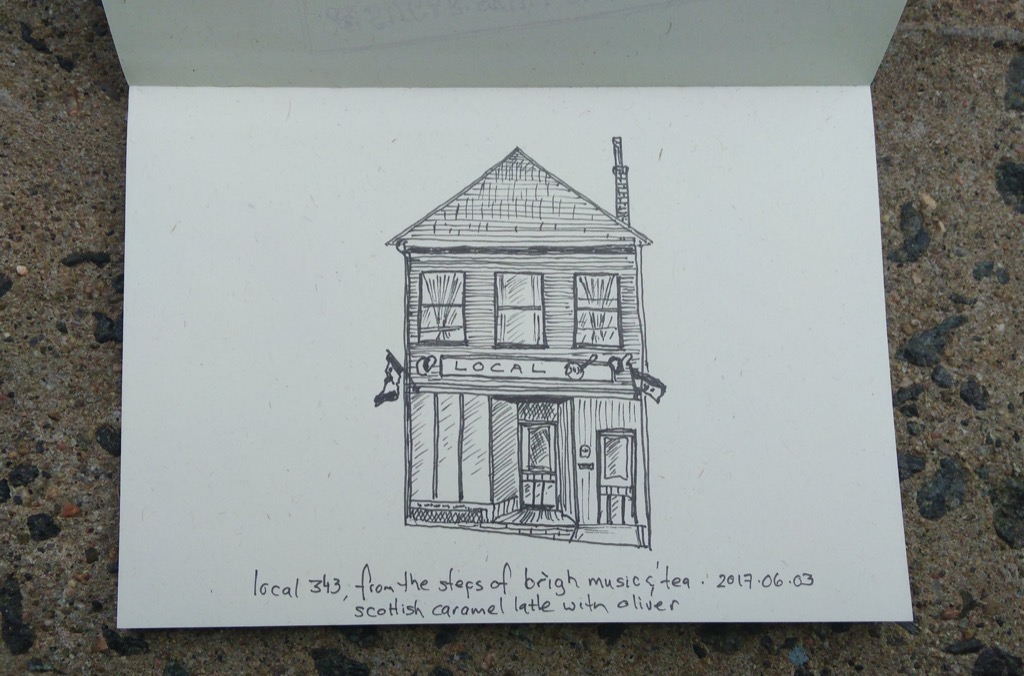
I’m especially proud of the Canadian flag. And, of course, the recessed entrance.
I cracked open a new notebook today, an Ecologica from the Italian paper maker Fabriano; from its name I assume the paper is recycled, and it does indeed appear mottled. But it’s very pleasant to draw on, and the binding allows it to open to flat.
Catherine and I grew up, in global terms, up the road from each other—she near Kingston, and I near Hamilton—but that doesn’t mean we share a vernacular.
Witness dark off, which I’d never heard until I met her.
Today’s sky over northwestern Charlottetown was as good a demonstration of what she means by this as I’ve ever seen.
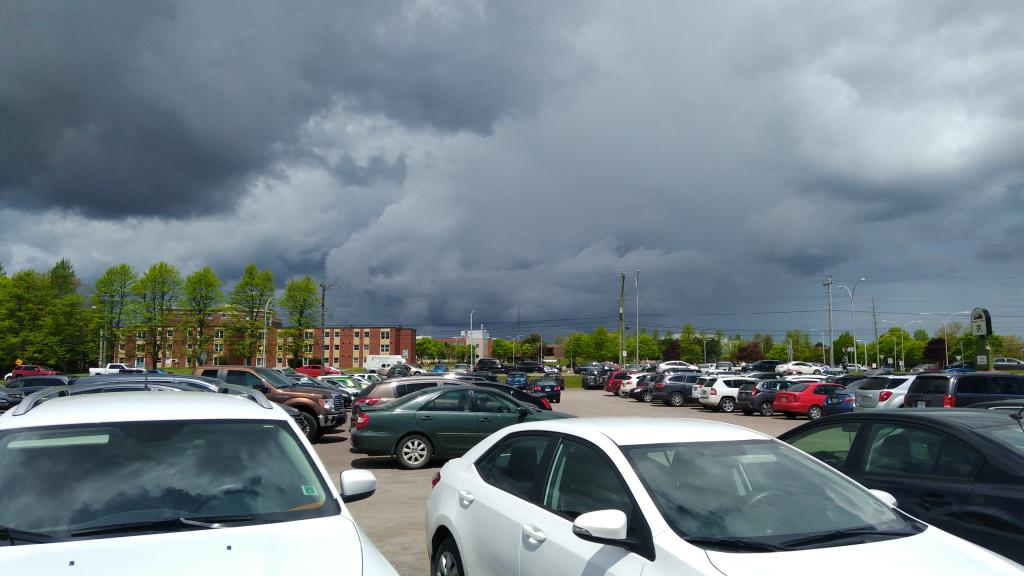
If I say “OK Google, ask Farmer’s Almanac about today,” my phone tells me that summer begins in 19 days (notice the non-subtle product promo there: try it out!).
But if I look at my appointment book, summer’s coming two weeks earlier.
Here’s this week’s family calendar (orange is Catherine, blue is me): it’s chock-a-block with appointments, meetings, lunches, music lessons, and vet visits:

Here’s the family calendar for next week:

Only two events scheduled: the last day of school for [[Oliver]] is on Thursday, and we have a party to attend on Friday night.
The anti-time-claustrophobia effects of this are extremely relaxing to the mind: just think of the things we’ll accomplish next week with no distractions and summer in the air.
The “recessed entrance” is a common architectural feature in commercial Charlottetown; it’s been my arch nemesis for the last month as I make my way through drawing many of these buildings.
There’s a lot that I’m unhappy with in this sketch of Receiver Coffee–the perspective on the railing, the irregularity of the windows on the second floor, the tree–but I’ve very proud of my handling of the recessed entrance. I think I’ve figured it out. Primarily revelation: the source code for sketching is all right there staring you in the face.
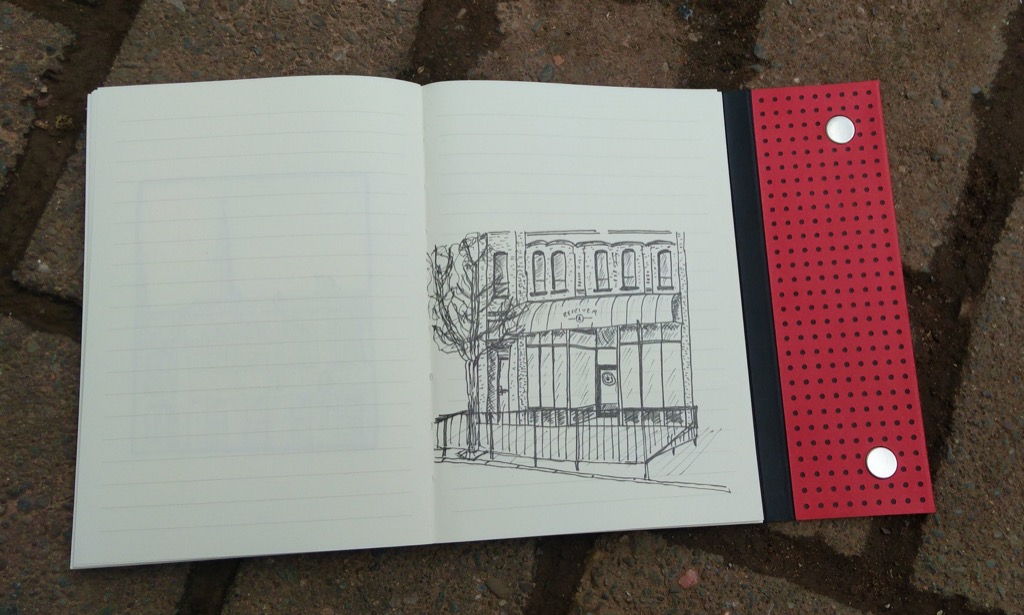
Several years ago, back when leaving your home wifi open for the neighbours to share, was de rigueur, I opened our front door one day to find a box of chocolates and a thank you note from a tenant who’d moved out of the building next door and wanted to thank us for the loan of the bandwidth for the years she’d been resident there. It was a thoughtful gesture, much-appreciated.
And, alas, rare in this day.
In recent years, originally to profit from having a letterpress that can print “thank you” cards, and then, encouraged onward by the genuine upswell of warmth that came every time I mailed one, I’ve become a regular sender of the real handwritten thank you. It’s something that I love doing, and the physicality of it renders digital communication soulless by comparison.
Since the rise of Facebook, Twitter et al, and the resultant decamping of web-based conversation into the walled gardens, it can feel eerily quiet around these here parts; I intuit that there are people reading, from time to time, but it’s become mostly a faith-based exercise.
Which is why it was such a pleasant thing to receive a thank you card in the mail–a lovely thank you card, handwritten, with the imagery explained–from readers Krista-Lee and Martin, away from the Island for 6 years and soon to return.
Thank you, Krista-Lee and Martin, for your kindness. I’d mail you back a thank-you-thank-you, but I worry you’re already loading the U-Haul. And about the recursion.
So I’ll buy you a coffee at the Farmers’ Market once you’re settled home.
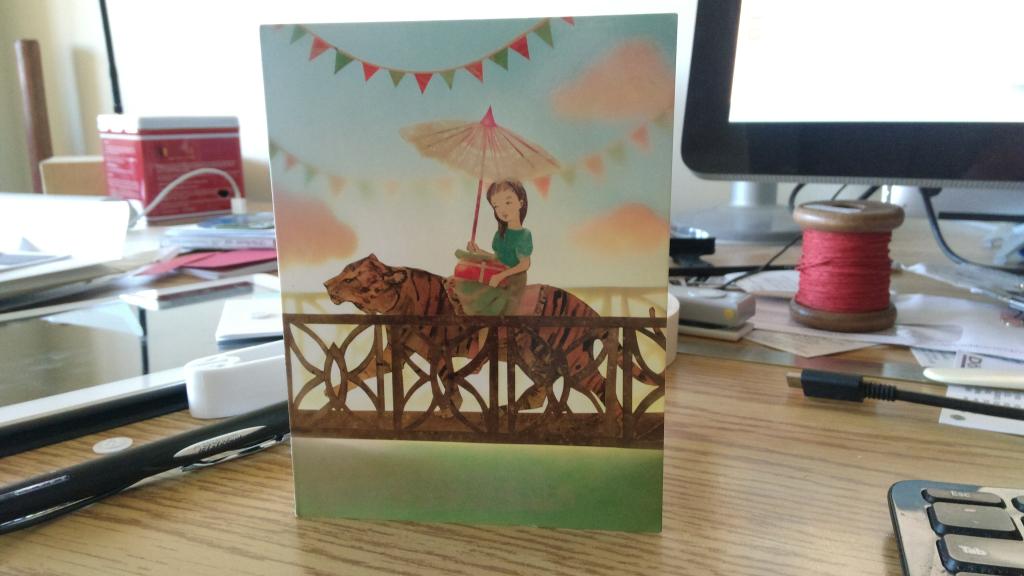
One of my favourite buildings in Charlottetown, I can see The Stamper Block from my office window. Or at least a slice of it.
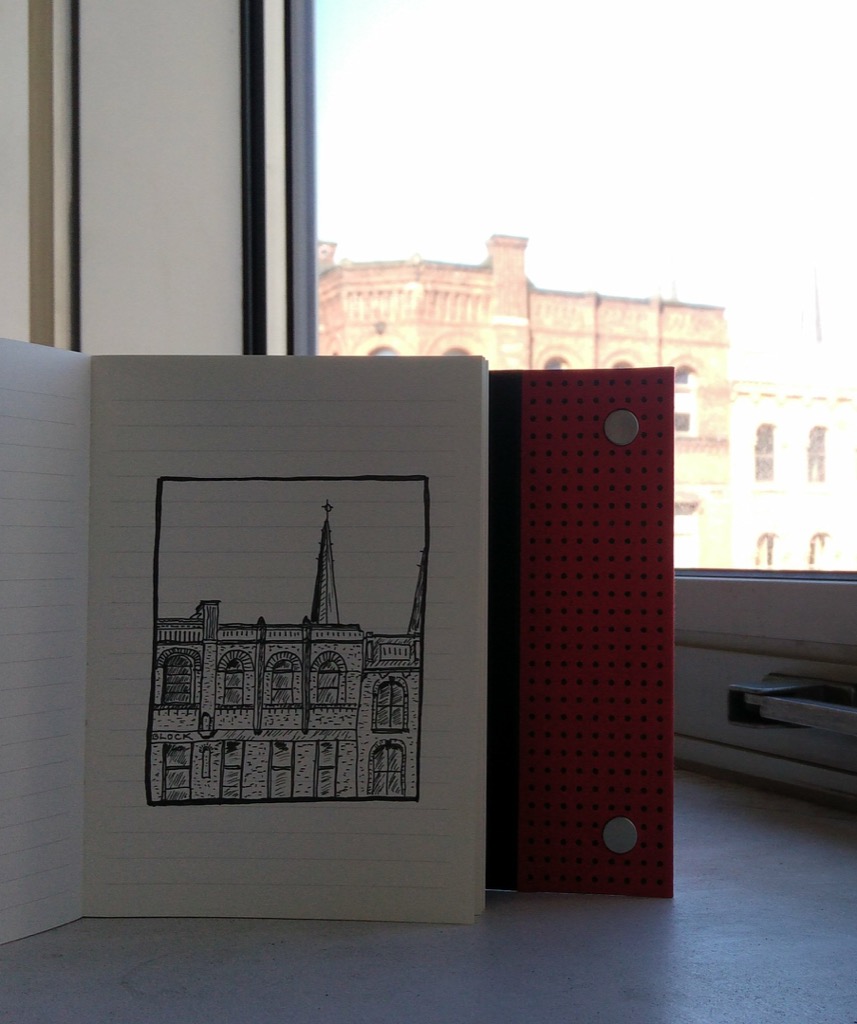
From the Historic Places website:
The Stamper Family owned and resided at the property in a wooden house for many years, before the present building was constructed. When Henry Stamper and Catherine Pippy married in 1841, the property was part of Catherine’s inheritance. The Stampers sold stationary and books from their store at this location. Their children, Sarah and Eva Stamper, eventually inherited the property and had the building that we see today constructed in 1892. The wooden home that formerly stood on the property was moved north to Grafton Street.
The Misses Stamper hired well-known architects, Chappell and Phillips to design the new Stamper Block. Contractors, McDonald and Harper, were in charge of constructing the large building. Because of the Fire of 1884, that had destroyed most of the buildings along Victoria Row, with the exception of Stamper’s previous wooden home, there had been a great deal of construction of new brick and stone buildings in this section of Richmond Street. The new Stamper Block was in keeping with Italianate Commercial influenced style of the new buildings.
There’s a house at 29 Fitzroy Street, The Stamper Residence, associated with the same Misses Stamper:
The Misses Stamper were two of five people who left money in their wills to found homes for retired ladies. The Wright-Peake-Leigh house was bought from the owner Mrs. Jack Webster in 1949 to become one of those homes. It was renamed the Stamper Residence in honour of the benefactors.
How we’ve come this far without there being a band called The Misses Stamper is beyond me.
Years after all the real cool kids were able to pay for things with their mobile phones, my Android phone finally acquired the ability to mate with my MasterCard and become a contactless payment device yesterday. I christened it with the purchase of a cappuccino at Receiver Coffee, and here’s what the record of this purchase looks like in the Android Pay app:

I’m not exactly sure why it is deemed more convenient to take out my phone, unlock it, and hold it in front of the contactless terminal than it is to take out my wallet and hold my actual MasterCard in front of the contactless terminal. I suppose that you could argue that the fact that the ability to pay with the phone is marginally-secured behind the need to unlock the phone, and that a virtual card number rather than my actual card number is presented to the merchant render the process more secure.
I’ll keep using it for a while and see if I can tease out any actual day-to-day benefits (other than the palpable future-sheen it affords).
Just sitting on the floor of the House of Sport, charging my phone. Looked up: PEI Horse Council. Who knew the horses were politically organized!

While I’m lauding bikefrastructure, allow me to laud Spicey Chef on Belvedere Avenue for having a bicycle rack at the front door: all restaurants should do this.
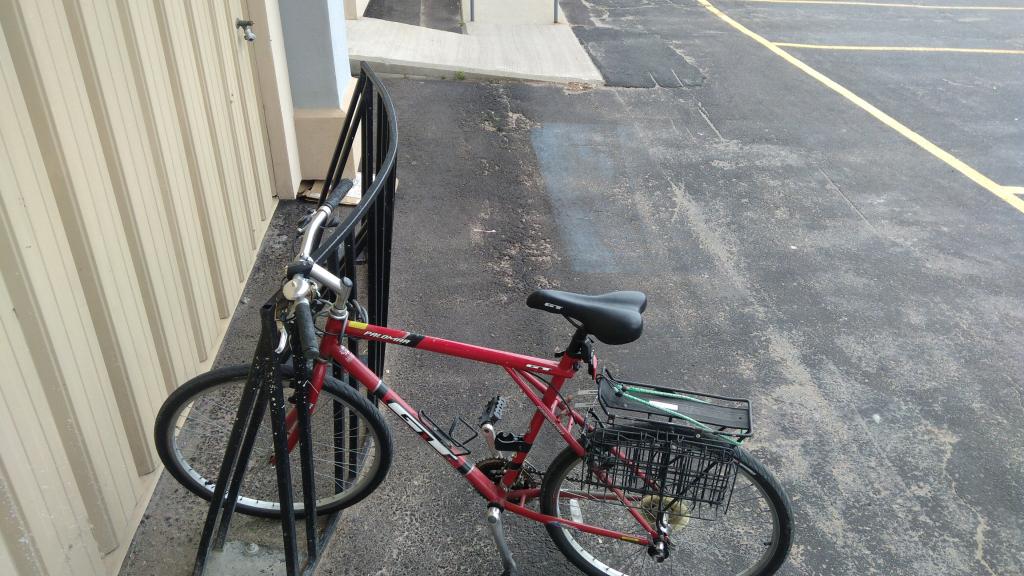
 I am
I am